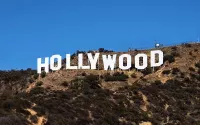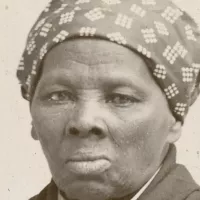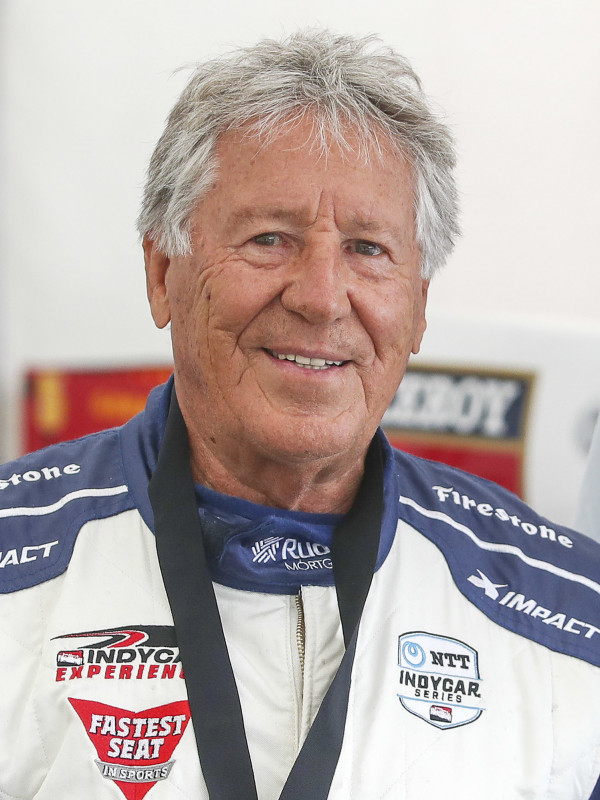Mario Andretti is a highly accomplished American former racing driver, renowned for his success across various racing disciplines. He notably won the Formula One World Drivers' Championship in 1978 and achieved 12 Grand Prix victories. In American open-wheel racing, he secured four IndyCar National Championship titles and triumphed at the Indianapolis 500 in 1969. His accomplishments extend to stock car racing with a Daytona 500 win in 1967 and endurance racing with three 12 Hours of Sebring victories, solidifying his legacy as one of the most versatile and successful racers in history.
February 28, 1940: Mario Andretti's Birth
On February 28, 1940, Mario Gabriele Andretti was born. He became an American racing driver and businessman.
1947: Treaty of Paris
In 1947, the Treaty of Paris transferred the territory where Andretti's family farm was located to communist-controlled Yugoslavia.
1948: Istrian-Dalmatian Exodus
In 1948, the Andretti family joined the Istrian–Dalmatian exodus, losing their land and possessions.
1948: Refurbishing a 1948 Hudson
The twins used money they made to refurbish a 1948 Hudson, using a stolen beer barrel as a fuel tank. The car was ready to race when the twins were 19 years old.
1954: Attending the Mille Miglia and Italian Grand Prix
In 1954, Mario Andretti and his brother watched the Mille Miglia won by Alberto Ascari. They also visited Monza for the Italian Grand Prix, where Andretti saw Ascari race against Juan Manuel Fangio, being mesmerized by the sound and speed.
1955: Emigration to Pennsylvania
In 1955, Mario Andretti and his family emigrated to Nazareth, Pennsylvania.
1955: Move to the United States
In 1955, the Andretti family moved to the United States after a three-year wait for visas, arriving in New York Harbor on June 16 with just $125 and settling in Nazareth, Pennsylvania.
1957: Father's Chevrolet
In 1957, the first car Mario Andretti regularly drove was his father's 1957 Chevrolet, which he and his twin brother upgraded.
1960: Early Racing Successes
From 1960 to 1961, Mario Andretti had early successes in sportsman racing, picking up two wins after their first four races.
1960: Indianapolis 500 dropped off the Formula One calendar
In 1960, the Indianapolis 500 was dropped off the Formula One calendar, but some teams continued racing at Indianapolis.
1961: Modified Stock Car Wins
From 1960 to 1961, Mario Andretti won 21 out of 46 modified stock car races.
1961: Midget Car Racing Debut
From 1961 to 1963, Mario Andretti started racing midget cars in the American Racing Drivers Club (ARDC) series.
March 1962: First Midget Race Victory
In March 1962, Mario Andretti won a midget race, which he dubbed "my first victory of any consequence."
1963: Successful ARDC Season
In 1963, Mario Andretti raced in over one hundred events, scored 29 top-five finishes in 46 ARDC races, and finished third in the season standings. He also won three feature races on Labor Day.
April 15, 1964: Initial Citizenship Date
In his 1970 biography, Mario Andretti stated that he became a naturalized U.S. citizen on April 15, 1964.
1964: USAC Championship Car Debut
In 1964, Mario Andretti progressed to USAC Championship Car racing.
1964: Initial IndyCar Drive Search
In 1964, Mario Andretti spent the first portion of the season trying to find a full-time IndyCar drive. He was initially turned down by DVL, and forced to sit out the 1964 Indianapolis 500.
1964: Full-Time USAC Drive
In 1964, USAC team owner Rufus Gray gave Mario Andretti a full-time drive. He won one race at Salem and finished third in the season standings. He also worked at a golf cart factory.
1964: Father's Acceptance of IndyCar Racing
Mario Andretti's father didn't watch him race until Andretti reached IndyCar in 1964.
1964: Break with DVL
Midway through the 1964 season, Mario Andretti got his big break with DVL, after impressing Brawner. He completed the final eight races, finishing 11th in the season standings and was named IndyCar Rookie of the Year. After the season, Brawner agreed to make Andretti his permanent driver.
April 7, 1965: Actual Citizenship Date
Mario Andretti later revealed that he actually obtained U.S. citizenship on April 7, 1965.
1965: Indianapolis 500 and Invitation to Formula One
At the 1965 Indianapolis 500, Jim Clark won and Andretti finished third as the top-placed rookie. Clark recommended Andretti to Colin Chapman, who invited Andretti to race in Formula One.
1965: First Stock Car Racing Appearance
At the height of his IndyCar career, Andretti made thirty appearances in top-level stock car racing starting in 1965.
1965: Attracting Support from Firestone and Ford
From 1965 to 1969, The Andretti-Brawner combination attracted technical and financial support from Firestone and Ford.
1965: USAC Debut
In 1965, Andretti scored one win and eight top-five finishes in sixteen USAC races.
1965: Sprint Car Win at Ascot Park
In 1965, Mario Andretti continued to race in sprint cars after progressing to IndyCar. He won once at Ascot Park and finished tenth in the season standings.
1965: First full season with DVL and Rookie of the Year
In 1965, Mario Andretti's first full season with DVL, he drove the Brawner Hawk. He finished third at the 1965 Indianapolis 500, earning Rookie of the Year. He also won the Hoosier Grand Prix. Despite only one race win, he consistently scored well, becoming the youngest IndyCar champion at age 25.
1966: Peak of Statistical Dominance
At the peak of his statistical dominance, between 1966 and 1969 Mario Andretti won 29 of 85 USAC championship races.
1966: Second USAC title win
In 1966, Andretti secured his second consecutive USAC title, dominating with eight wins out of fifteen starts. He led a significant number of laps, showcasing his strong performance throughout the season.
1966: Back-to-Back USAC Titles
In 1966, Mario Andretti won a second consecutive USAC title.
1967: Al Dean's death
At the end of the 1967 season, DVL owner Al Dean died and his team was wound up. The team's assets were sold to Andretti, who became an owner-driver under the name Andretti Racing Enterprises.
1967: Losing the USAC Championship to A. J. Foyt
In 1967, Andretti lost the USAC championship to A. J. Foyt. Although Andretti won eight races, Foyt won the 1967 Indianapolis 500. Goodyear arranged for Foyt to commandeer Roger McCluskey's car to prevent Andretti from winning, leading to Foyt winning the championship by 80 points. Andretti also received his first Driver of the Year award in 1967.
1967: Best Season Performance
In 1967, Mario Andretti achieved his best season performance in USAC, competing in eight races, winning at Mosport, and finishing seventh in the standings.
1967: Limited Sprint Car Entries, Two Wins
In 1967, Mario Andretti entered only three sprint car events, winning two of them.
1967: Race Against Aldo at Oswego Speedway
In 1967, Mario Andretti raced against his twin brother Aldo at Oswego Speedway; Mario won, and Aldo finished 10th after a brake failure.
1967: Daytona 500 and Sebring Victory
In 1967, Mario Andretti won the Daytona 500 with Holman-Moody and also secured his first major sportscar racing victory at the 12 Hours of Sebring with Ford.
1968: Full-time offer declined
At the end of the 1968 season, Chapman offered Andretti a full-time Formula One drive to replace Clark, but Andretti declined, wishing to continue his USAC career.
1968: Pole Position and US Grand Prix debut
In 1968, Andretti debuted at the United States Grand Prix, taking pole position. Jackie Stewart overtook him on the first lap, and he retired with a clutch failure.
1968: Italian Grand Prix Debut and Disqualification
In 1968, Andretti joined Lotus for the Italian Grand Prix. He beat the Monza lap record in testing but was later disqualified for flying back to America for a race.
1968: Losing the title at Riverside
In 1968, Andretti lost the title at the final race of the season at Riverside. Despite holding a lead over Bobby Unser, his engine failed, leading to Unser winning the title by 11 points. Andretti set records for second-place and podium finishes in a season.
1968: Last USAC race
In 1968, Andretti's last USAC race, he scored one win and eight top-five finishes in sixteen races from 1965 to 1968.
1968: Formula One Debut
In 1968, Mario Andretti began competing in Formula One.
1968: Formula One Debut at US Grand Prix
In 1968, Mario Andretti debuted in Formula One at the United States Grand Prix with Lotus, qualifying on pole position.
1969: Stock car racing appearances end
At the height of his IndyCar career, Andretti also made thirty appearances in top-level stock car racing, ending in 1969.
1969: Team Split After Championship
Following the 1969 title season, the core of the team split up when Goodyear persuaded STP mechanics Clint Brawner and Jim McGee to start their own team.
1969: Career-Ending Accident for Aldo
In 1969, Aldo, Mario's twin brother, suffered a career-ending accident.
1969: Winning the Indy 500 and USAC title
In 1969, Andretti won nine races, including the 1969 Indianapolis 500 and the Pikes Peak International Hill Climb. He won his third title, was named ABC's Wide World of Sports Athlete of the Year, and broke USAC point records.
1969: Third USAC Title and Indy 500 Win
In 1969, Mario Andretti won his third USAC title and the Indianapolis 500.
1969: Indianapolis 500 Win
In 1969, Mario Andretti won the Indianapolis 500.
1970: Al Unser breaks Andretti's record
In 1970, Al Unser led 66.8% of all laps, breaking Andretti's record of leading 54.5% of all laps in 1966.
1970: First Formula One podium
In 1970, Andretti collected his first Formula One podium at the Spanish Grand Prix after several drivers retired with mechanical issues.
1970: Fifth-place finish and STP Formula One team shut down
In 1970, Andretti settled for a fifth-place finish. The STP Formula One team shut down after one season.
1970: Experimentation with sidepods
In 1970, Andretti's STP-March team had experimented with sidepods in 1970.
1970: Maiden Podium and Ferrari Signing
In 1970, Mario Andretti took his maiden podium finish at the Spanish Grand Prix with STP driving a privateer March 701 and signed for Ferrari, also winning at Sebring again.
1970: Publication of Andretti's Biography
Mario Andretti's biography was published in 1970.
March 1971: First podium since March 1971
In March 1971, Andretti scored his first podium since March 1971, at the Dutch Grand Prix. He finished the season strong and ended up 6th in the Drivers' Championship.
1971: Signed with Scuderia Ferrari
In 1971, Andretti signed with Scuderia Ferrari. He won his maiden Grand Prix at Kyalami after race leader Denny Hulme's engine failed.
1971: Decline in USAC Performance
In 1971, Andretti's performance declined. He fell to ninth in USAC's paved track championship and scored no points in the dirt track standings.
1971: First F1 Victory
In 1971, Mario Andretti secured his first victory in Formula One at the season-opening South African Grand Prix, debuting for Ferrari.
1971: USAC Split
In 1971, USAC split off its dirt-track races into a separate National Dirt Car Championship, while the pavement championship retained the name USAC Championship Car Series.
1972: Guest appearances in Formula One
During this period Mario Andretti made guest appearances in Formula One with Ferrari in 1972.
1972: Joining Vel's Parnelli Jones Racing
For the 1972 season, Andretti left STP and joined Vel's Parnelli Jones Racing, IndyCar's dominant team at the time. He persuaded the team to hire Lotus designer Maurice Philippe, and Jim McGee also joined the team.
1972: Third Sebring Victory
In 1972, Mario Andretti achieved his third Sebring victory.
1972: 11th place finish
In 1972, Mario Andretti finished 11th in his first full-time IndyCar season with Parnelli, while his teammate Leonard won the title.
1972: Features in The Speed Merchants
In 1972, Mario Andretti was featured in and partially narrated The Speed Merchants, a documentary about the 1972 World Sportscar Championship, in which his Ferrari won the constructors' championship.
1972: Ferrari Offer Declined
In 1972, following the Questor win, Enzo Ferrari offered to make Andretti his No. 1 driver for 1972, but Andretti declined. He also raced five times but scored no podiums.
1973: No competition in F1
In 1973, Andretti did not compete in the Formula One season.
1973: Al Unser Beats Andretti
In 1973, teammate Al Unser beat Andretti even though Andretti won two out of three races.
1974: Raced in Formula 5000
During this period Mario Andretti raced in Formula 5000 in 1974.
1974: Part-time Role for Parnelli
In 1974, Mario Andretti had a part-time role for Parnelli.
1974: Dirt track title win
In 1974, Mario Andretti secured the dirt track title by winning three out of five races.
1974: North American end-of-season races
In 1974, Parnelli ran Andretti in the two North American end-of-season races. He also ran Andretti in the North American Formula 5000 series, finishing second to Brian Redman.
1975: Stopped competing full-time in IndyCar
In 1975, Andretti stopped competing full-time in IndyCar, instead driving full-time for the Parnelli Formula One team, and raced in Formula 5000.
1975: Brawner's Autobiography
In 1975, Andretti wrote the foreword to Brawner's autobiography, reflecting on their working relationship and the reasons for their operation falling apart.
1975: Formula One driver; Disappointment with Parnelli VPJ4; Firestone pulls out; Frequent brake failures; Spanish Grand Prix; Swedish Grand Prix; 14th in Championship
In 1975, Mario Andretti became a full-time Formula One driver but was disappointed with the Parnelli VPJ4 due to its design and the withdrawal of sponsor Firestone, which led to poor performance and frequent brake failures. At the Spanish Grand Prix in 1975, he qualified fourth and briefly led after a crash but retired due to suspension damage. He nearly died at the Swedish Grand Prix due to brake failure, finishing fourth in the backup car. He finished 14th in the Drivers' Championship, scoring five points.
1975: Full-time with Parnelli
In 1975, Mario Andretti joined Parnelli full-time after finishing runner-up in the SCCA Continental Championship.
1975: Second to Brian Redman
In 1975, Parnelli also ran Andretti in the North American Formula 5000 series in 1975, finishing second to Brian Redman.
1975: Experimentation with ground effect
Since mid-1975, Lotus had been trying to shape the car to generate downforce (making the car faster in the corners) without a large rear wing (whose drag would make the car slower on the straights).
1976: Sporadic IndyCar Appearances
From 1976, Andretti made sporadic IndyCar appearances with McGee's new team, Penske Racing.
1976: Parnelli withdraws from Formula One
In 1976, Andretti started the year with Lotus, returning to Parnelli for two races before Parnelli withdrew from Formula One after round three due to sponsor Viceroy withdrawing funding. Andretti learned about the decision from a reporter.
1976: Return to Lotus
In 1976, Mario Andretti moved back to Lotus, winning the season-ending Japanese Grand Prix and helping develop the 78.
1976: Released from USAC Contract
In early 1976, after quitting Formula One, Parnelli released Andretti from his USAC contract so that he could focus on Formula One.
1977: Engine failures and other issues
In 1977, Andretti endured a difficult season, suffering engine failures while leading at Spielberg, in second at Silverstone, and battling for third at Zandvoort. His engine also failed at Hockenheim. He also ran out of fuel at three races and retired in third at Interlagos with an electrical failure, and crashed at Zolder while fighting for the lead. Andretti finished third in the Drivers' Championship.
1977: Cameo in Bobby Deerfield
In 1977, Mario Andretti made a cameo appearance in the movie Bobby Deerfield.
1977: Four Grand Prix Wins
In 1977, Mario Andretti won four Grands Prix, finishing third in the World Drivers' Championship.
1977: Lotus 78 and four race wins
In 1977, the Lotus 78 was one of the fastest cars, and Andretti won four races, more than any other driver. At Zolder in 1977, Andretti took pole by 1.54 seconds.
1978: Imperial Tobacco pulls funding; Lotus 80 development
Following the 1978 title season, lead sponsor Imperial Tobacco pulled funding. In 1979, the Lotus 80 was rolled out, with downforce overwhelming the car's suspension.
1978: Domination and speculation of team orders
In 1978, Andretti dominated the season, winning five of the next eight races, while teammate Peterson finished second with two wins. Lotus had four 1–2 finishes, and Andretti won them all, leading to speculation about team orders.
1978: Formula One World Drivers' Championship
In 1978, Andretti won his first and only Formula One World Drivers' Championship. Before the season, Ronnie Peterson joined the team and was made the highest-paid driver in Formula One.
1978: Formula One Championship
In 1978, Mario Andretti won the Formula One title after achieving six victories, becoming the second World Drivers' Champion from the United States.
1979: Winless Season with Lotus
In 1979, Mario Andretti had a winless campaign with Lotus.
1979: IndyCar World Series established; Andretti competes sporadically
In 1979, the IndyCar World Series was established by CART, displacing the USAC championship. Andretti sporadically competed in CART during the 1979 and 1980 seasons, winning one race at Michigan in 1980.
1979: Lotus 80 problems and return to Lotus 79
In 1979, the Lotus 80 had porpoising issues, and the weak chassis popped out rivets while driving. Andretti scored a podium in the car's debut but returned to the Lotus 79 after only three races. Andretti finished 12th in the standings.
1980: Development of Lotus 88; Unsuccessful season
In 1980, Chapman tried to solve the problems with the Lotus 80 by developing the Lotus 88, a complex and innovative carbon-fiber, dual-chassis structure. The team used a transitional car, the Lotus 81, for 1980, while Chapman developed the 88. Andretti scored only one point all season.
1980: Another Winless Season
In 1980, Mario Andretti experienced another winless campaign with Lotus.
1980: CART teams develop ground effect cars
In 1984, the Lola T800 effectively utilized the ground effect technology that various CART teams had been attempting to develop since 1980.
1981: Signed sponsorship with Marlboro and joined Alfa Romeo
For the 1981 season, Andretti signed a sponsorship deal with Marlboro and joined the Alfa Romeo team. Andretti finished fourth on his debut at the United States Grand Prix West, but the team was otherwise uncompetitive. He finished 17th in the Drivers' Championship.
1981: Departure from Lotus; Banning of Lotus 88
In 1981, Andretti left Lotus at the end of the 1980 season, shortly before Chapman was about to unveil the Lotus 88. After his departure, the FIA banned the Lotus 88 in 1981.
1981: Joined Patrick Racing and controversially stripped of Indianapolis 500 win
In 1981, Andretti switched to Patrick Racing, reuniting him with STP Corporation and Jim McGee. He did not win a race but recorded five top-five finishes. At the 1981 Indianapolis 500, Andretti was controversially stripped of the win four months after the race.
1981: Move to Alfa Romeo
In 1981, Mario Andretti moved to Alfa Romeo.
1982: Full-time CART racing and third in season standings
After leaving Alfa Romeo, Andretti joined CART full-time for the 1982 season. He finished third in the season standings, with six podiums in 11 races.
1982: Briefly raced for Williams
During the 1982 season, Andretti briefly raced for Williams at the United States Grand Prix West after Reutemann abruptly quit. He damaged his suspension and retired.
1982: Retirement from Formula One
In 1982, following fill-in appearances for Williams and Ferrari, Mario Andretti retired from Formula One with 12 wins, 18 pole positions, 10 fastest laps, and 19 podiums.
1982: Formula One banned ground effect
In 1984, the Lola T800 effectively utilized the ground effect technology that Formula One had just banned in 1982.
1982: End of Formula One Career
Mario Andretti's Formula One career ended in 1982.
1983: Joined Newman/Haas Racing team
In 1983, Andretti joined the new Newman/Haas Racing team, set up by Carl Haas and Paul Newman. The team used cars built by Lola, and Andretti spent the rest of his full-time racing career with the team.
1983: Development of Lola T700 and two wins
In 1983, Andretti worked with the team to develop the Lola T700. He took the team's maiden win at Elkhart Lake and scored another win in Las Vegas. He recorded eight top-five finishes in 13 starts.
1983: Third Place Finish
In 1983, Mario Andretti finished third again with Newman/Haas.
1984: Agreed to serve as Renault's reserve driver
Andretti agreed to serve as Renault's reserve driver for one U.S. race in 1984.
1985: Newman/Haas distributes Lolas
In 1985, Newman/Haas agreed to distribute the Lolas to more competitors, watering down its technical advantage. After a fast start, Andretti recorded only one more top-five finish and finished fifth in the standings.
1986: Ended Formula One career
In 1986, Andretti declined to be considered for a reserve role, effectively ending his Formula One career.
1986: Pocono 500 Win
In 1986, Mario Andretti won the Pocono 500.
1991: Mario Andretti's Racing Challenge release
In 1991, Mario Andretti's Racing Challenge video game was released.
1991: Michael Andretti's CART Title
In 1991, Mario Andretti's son, Michael, won the CART title.
1993: Phoenix Victory
In 1993, Mario Andretti's victory at Phoenix made him the oldest winner in IndyCar history, aged 53, as well as the first driver to win a race in four different decades.
1994: Mario Andretti Racing release
In 1994, Mario Andretti Racing video game was released.
1994: Retirement from Newman/Haas
In 1994, Mario Andretti retired from Newman/Haas.
1995: Youngest IndyCar champion record broken
In 1995, Jacques Villeneuve broke Mario Andretti's record becoming the youngest IndyCar champion which Andretti had held for 30 years.
1995: Saved Napa Valley vineyard
In 1995, Mario Andretti and Joe Antonini saved a struggling Napa Valley vineyard, renaming it the Andretti Winery.
1996: Andretti Racing release
In 1996, Andretti Racing video game, in association with his sons, was released.
1997: Founded Andretti Petroleum
In 1997, Mario Andretti founded Andretti Petroleum, which owns a chain of gasoline stations and car washes in Northern California.
2000: Hall of Fame Induction
In 2000, Mario Andretti was inducted into the International Motorsports Hall of Fame.
2005: Appeared in Dust to Glory
In 2005, Mario Andretti appeared in the documentary Dust to Glory, which discusses a race in which he served as grand marshal.
2006: Cameo in Cars
In 2006, Mario Andretti had a cameo in Pixar's Cars, an animated film where he was represented by a sentient version of the Ford Fairlane.
2006: Bullrun Rally Participation
In 2006, Mario Andretti participated in the Bullrun Rally from New York to Los Angeles.
2007: Interviewed for documentary A State of Vine
In 2007, Mario Andretti was interviewed about his winemaking activities for the documentary A State of Vine.
2012: Official Ambassador for COTA and the United States Grand Prix
In 2012, Mario Andretti became the official ambassador for the Circuit of the Americas (COTA) and the United States Grand Prix.
2013: Voiced Traffic Director in Turbo
In 2013, Mario Andretti voiced the traffic director at Indianapolis Motor Speedway in DreamWorks' Turbo.
November 2015: Appearance on Jay Leno's Garage
In November 2015, Mario Andretti appeared on the first season of TV series Jay Leno's Garage, driving Leno in fast cars and discussing his racing career.
2016: Admission of Fabricated Story
In 2016, Mario Andretti admitted that he and his brother fabricated a story about racing in junior formulae back in Italy to intimidate their opponents.
2018: Reflecting on Peterson's death
In 2018, Andretti reflected on the death of Peterson at the Italian Grand Prix in 1978, stating he could never truly celebrate his championship win due to the tragedy.
2022: Second-highest lap lead record
As of the 2022 season, Andretti's 1966 record of leading 54.5% of all laps is still the second-highest figure in history.
2026: Cadillac in Formula One
From its debut 2026 season onwards, Mario Andretti is set to serve on the board of directors of Cadillac in Formula One.
Mentioned in this timeline
IMAX is a proprietary system utilizing high-resolution cameras film formats...
The United States of America is a federal republic located...
California is a U S state on the Pacific Coast...

Las Vegas Nevada's most populous city and the seat of...
Pennsylvania is a U S state located in the Mid-Atlantic...

Los Angeles is the most populous city in California and...
Trending

5 days ago Aaron Wiggins seizes opportunity with OKC Thunder injuries, recovers from adductor issue.
2 days ago Jalen Williams' Impact: Thunder, Warriors Matchups, Dort's Future, Injury Return

7 months ago Mikaela Shiffrin Releases Final Episode of "Moving Right Along" Web Series

De'Anthony Melton known as Mr Do Something is a professional basketball player in the NBA currently playing for the Brooklyn...

Harrison Butker is a placekicker for the Kansas City Chiefs in the NFL Drafted in he played college football at...

6 months ago Harrison Ford and Gene Simmons to be honored by Operation Smile for charity.
Popular
Matt and Ross Duffer known as the Duffer Brothers are...
Aftyn Alyssa Behn is an American politician currently serving as...

Candace Owens is an American conservative political commentator and author...

XXXTentacion born Jahseh Dwayne Ricardo Onfroy was a controversial yet...

Ilhan Omar is an American politician currently serving as the...

Harriet Tubman was a pivotal American abolitionist and social activist...
